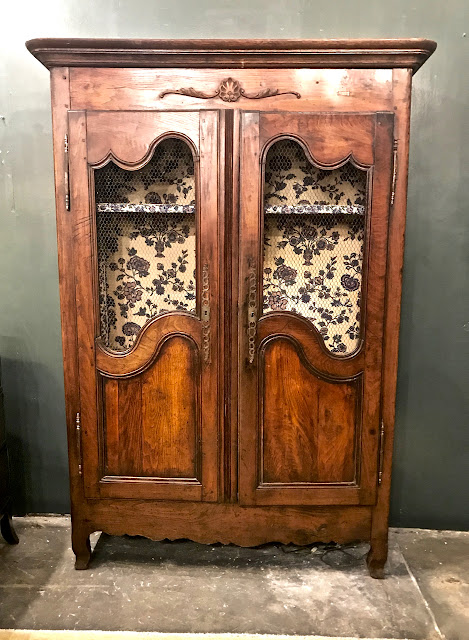In my new space things have gotten way too traditionally stiff........so to honor my neighbor and bestie Angie, Bonita Interiors, who is a true master of the art of hip traditional, I'm going to mix it up a bit.
I grabbed a few photos from Angie's website: bonitainteriors.com for a glimpse at Angie's artistry.
This is a pair of my favorite chairs--antique Victorian Eastlake chairs done in an energy-filled traditional stripe that takes the chairs out of traditional
Angie has taken a mid-century French style fauteuil and bleached and patinated the frame (she does all of the wood finish work) and upholstered it in a chinoiserie toile--pure traditional, but also Boho Chic.
This pair of ottomans is definitely mid-century minimal, but in Angie's hands they revert (just a bit) to 19th c. English stools with the indigo fabric and mitering.
I love the pairing of the traditional with the mid-century sculpture and carved lamp.
Angie is not only a master of furniture and upholstery, she is an accomplished artist, working mainly with abstract paintings.
I am more of a purest, but I'm breaking through to coloring outside-the-lines a bit more.
Yesterday I bought this pair of ottomans--I had spied them on Wednesday at Preview and wondered. I thought that they were pretty interesting, but wasn't sure. By Thursday I knew what I wanted to do with them..........(yes, I know they are upside-down but that's they way they showed at auction)
When I got the benches into the Explorer (who became ill this week), I could really check them out--yippee--they were manufactured by the renown furniture maker, Karges, in the mid-1960s. I have the ivory linen in my stash--what's new is going to be a bright lime green welt and cushion piping.
Remember the pair of little footstools from last month
These little guys definitely fit into my high/low design parameters: Period stools and mid-century upholstery.
I have a period 18th c. Bergere in inventory that compares decoratively with Angie's chinoiserie fauteuil. However, the surface of the bergere was acquired over 240 years and the toil fabric is an early
19th century period toile.
My late 19th/early 20th c. painted Italian fauteuil is similar stylistically to Angie's fauteuil; but I toned it down with simple top-notch linen and the painted finish has a naturally acquired patina.
Unfortunately, I do not have any painterly talents (at least as far as I know). However, both Angie and I are passionate about art and paintings and the effects that these media have on culture.
18th c. FINDS
I love living with my feet in two eras---the now and 18th c. France or Spain and England has a little bit of a draw.
We bought this great 19th c. French gilt mirror--it measures at least 7.5 ft and is surmounted by a carved and gilt putti.
I think the mirror dates to c.1860-70--not what I usually buy--My eye went to this mid-century French Sunburst or Sorcier mirror. It is phenomenal--but it's been current
for a long time and the 19th c. mirror is begging to come back to the forefront.
I couldn't pass up this late 18th/early 19th c. French rosewood poudreuse or vanity.
The condition of the center panel marquetry is not good, but Roberto is a magician with projects like this.
And, of course, considering my addiction to period chairs, I couldn't pass up this pair of adorable little Louis XVI chairs dating to the late 18th c. The painted surface is heavily degraded; so I'll leave it like that. The chairs will be upholstered in a heavily textured natural Belgium linen
Two ways to distinguish period chairs from older reproductions: (1) doweled legs and (2) a center back support (both evident on these chairs).
I also check the smoothness/roughness on the unfinished wood on the underside of the seat--if it's rough or if I can feel ridges caused by hand planing, then the piece is pre-1830 (or so).


















































